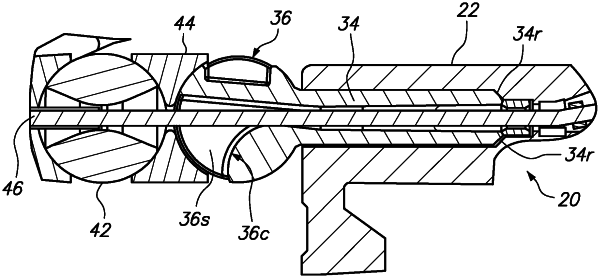| CPC A61B 17/02 (2013.01) [A61B 17/0206 (2013.01); A61B 90/50 (2016.02); A61B 90/57 (2016.02); A61B 2017/0237 (2013.01); A61B 2017/0243 (2013.01); A61B 2017/306 (2013.01); A61B 2017/308 (2013.01); A61B 2090/508 (2016.02); A61B 2090/571 (2016.02)] | 20 Claims |

|
1. A surgical instrument comprising:
a mount body having a top portion, a distal end, a proximal end and a bottom portion;
a joint member pivotally mounted at a distal end portion of the mount body to allow positioning of a proximal portion of an arm extending distally from the joint member, the joint member configured to at least partially constrain movement of the proximal portion of the arm to a plane; and
a working end mounted to a distal end portion of the arm, wherein the surgical instrument is a stabilizer and the working end comprises a pair of contact members;
wherein the joint member comprises a first joint member and a second joint member, wherein the first joint member confines movement of the proximal portion of the arm to yawing, and the second joint member confines movement of the proximal portion of the arm to pitching.
|